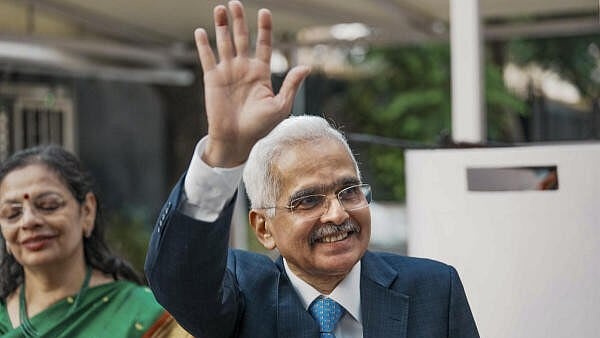
Outgoing Reserve Bank Of India (RBI) Governor Shaktikanta Das during his farewell at RBI headquarters, in Mumbai, on Tuesday.
Credit: PTI Photo
When Shaktikanta Das, who demitted office on Tuesday after a six-year tenure, took charge of the Reserve Bank of India in December 2018, many detractors of the Modi government derided the appointment because of his educational qualification. Das had done Masters in History, while his two immediate predecessors - Urjit Patel and Raghuram Rajan - held Doctorates in Economics.
But Das went on to be the second-longest serving RBI Governor, and the longest serving chief post-liberalisation.
Those who have interacted with him regularly will attest that the comments on his education - instead of his extensive work in the Finance Ministry, the 15th Finance Commission, and as India’s G-20 Sherpa - had affected him in some way.
Six years later, the broad consensus is that Das has done a stellar job, steering India’s monetary policy and the financial system through some difficult times, including the Covid-19 pandemic and its economic fallout.
With his calm demeanour, coupled with an astute understanding of policymaking and the economy, Das has won over even his harshest critics. He ends his term as a two-time winner of the ‘Central Banker of the Year’ award, given by the Global Finance magazine.
“I have tried to give my best to the institution,” Das said at his farewell media briefing on Tuesday. Asked if he plans to return to public office after stepping down from the RBI, he said he “will think about it”.
Contrary to expectations that the RBI would toe the government’s line, he has proven to be independent-minded. In spite of increasingly frustrated calls from the Centre that the Monetary Policy Committee should cut interest rates to boost growth, the rate-setting body has been rightly cautious about the mercurial nature of food prices.
India’s headline retail inflation rose to a 14-month high of 6.21% in October, driven by a sharp jump in food prices, especially vegetables.
However, Das has repaired the relationship between North Block and the RBI, which was tenuous, to say the least, under Rajan and Patel. Before Das, communications had broken down, and a few times even the Prime Minister’s Office had to intervene.
“Heartfelt thanks to Finance Minister Nirmala Sitharaman for her constant support and backing. The fiscal-monetary coordination was at its best and helped us to deal with the multiple challenges during the last six years,” Das said in a post on X, on Tuesday.
It can be argued that part of the reason why relations were good between the two institutions, apart from Das’ own long career in the Finance Ministry, was that under him, the RBI transferred record dividends to the Central government, thus helping the latter’s budgets. Just earlier this year, the RBI transferred a whopping Rs 2.11 lakh crore in surplus to the Centre.
During his time the balance-sheets of the banks strengthened due to strict asset quality controls by the RBI. Moreover, the levels of non-performing assets (NPAs) are now no longer a danger to the Indian financial sector.
However, it was not all smooth sailing. As the US dollar strengthened over the last few years, the RBI had to resort to selling more dollar reserves to prevent the rupee from crashing. Even then, new record lows are being touched quite frequently for the local currency.
Overall, one can argue that Das leaves behind a strong institution as well as a strong legacy for his successor, Sanjay Malhotra.